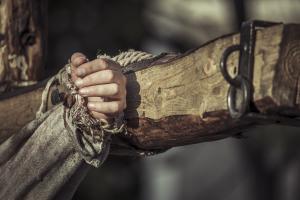Products Showing 24 of 111

15.2
The Jews of Jesus’ day lived in homes meant to house an entire extended family, with several rooms situated around a common courtyard. A family’s home in that patriarchal society was known as a “beth ab,” which means, &ldqu...

16.2
When the disciples arrived with Jesus in Jerusalem, they marveled at the unbelievable beauty of the Lord’s temple. According to the Bible, the original temple built by Solomon was also absolutely stunning. And yet, in both cases it wasn't en...

Lesson 6.3
When the believers began to bring the message of the gospel to the world of the Gentiles, they quickly realized that their faith made them extremely countercultural. How would they explain the good news in places where they couldn't engage in the ...

Lesson 7.3
The apostle Paul was no stranger to the duties of a rabbi, having studied under one of the most famous rabbis in Israel before becoming one himself. He understood exactly what Jesus meant before His ascension, when He commanded the church to go ou...

Lesson 8.3
The Lord defied the gods of Egypt with mighty displays of power so that Israel, Egypt, Pharaoh, and ultimately the entire world would see the strength of the one and only God. Pharaoh hardened his heart, but the Israelites responded to the power o...

Lesson 9.3
God desired a people who would partner with Him in bringing shalom to the chaos of a broken, hurting world. Israel experienced a taste of the peace He brings when He rescued them out of Egypt. In this lesson, you will continue on the road of the e...

Lesson 10.3
Psalm 78 says that God led his people Israel "like sheep through the desert." Their wanderings through the Sinai provide a striking image of God's leading in our lives today. In this lesson, you will follow God's people through this barr...

Lesson 11.3
During their forty years of testing in the desert, God continued to teach and shape the Israelite nation. By the time they entered the Promised Land, a new generation had formed, a people who obeyed and trusted God with all their heart, soul, and ...

Lesson 12.3
The Bible compares those who trust in the word of the Lord to great trees planted by streams of water. What would this image mean to someone living in the desert, where water is scarce and trees are few and far between? Is it possible to live out ...

Lesson 13.3
Sheep and shepherds were so much a part of the Biblical world, it's no wonder Jesus uses the imagery as a metaphor in several of His teachings. The shepherds of His day knew every one of the animals in their flock by sight and spent their lives pr...

Lesson 14.3
The Colosseum in Rome is famous for many reasons, not least of which because it was built by the spoils of war from the destruction of Jerusalem, the military defeat of the Jews. In the Roman world, it was assumed that if Caesar was...

15.3
Jesus came with a unique message, preaching to the Jewish people that “the kingdom of heaven has come near” (Matthew 4:17). But from the beginning, there was another king who hates the shalom that God creates and loves life’...

16.3
When the time came for God to choose a people, He didn’t pick the strongest kingdom He could find. He chose the weak, the nobodies – a family that would become the nation of Israel. God rescued them from Egypt and brought them into the...

Lesson 6.4
When questioned about his message, Paul tells the Athenians that the one and only God "does not live in temples made with hands" (Acts 17:24). Naturally, anyone who was curious about Jesus in the Greco-Roman world would ask the early bel...

































